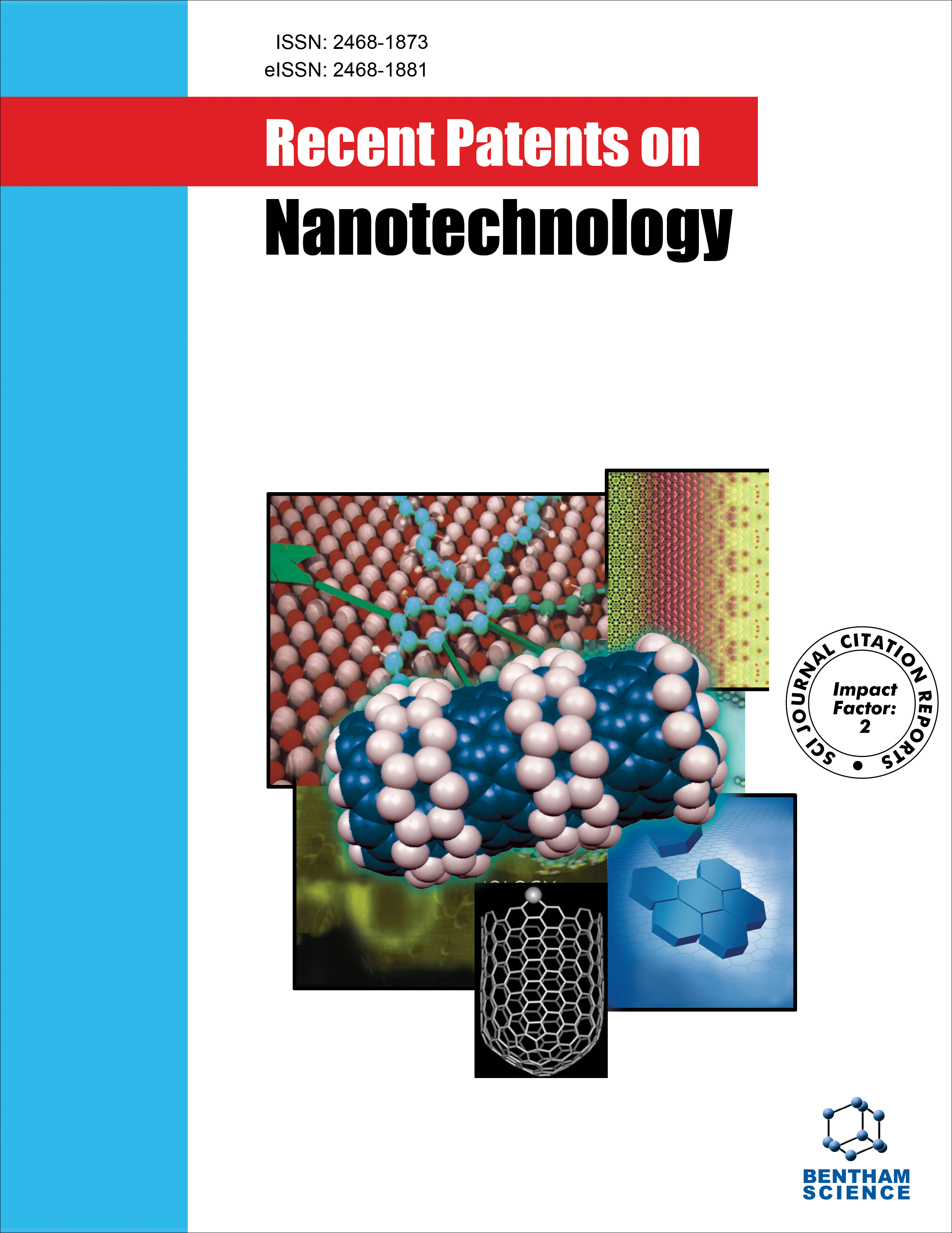- Home
- A-Z Publications
- Recent Patents on Nanotechnology
- Previous Issues
- Volume 6, Issue 1, 2012
Recent Patents on Nanotechnology - Volume 6, Issue 1, 2012
Volume 6, Issue 1, 2012
-
-
Preface
More LessAuthors: Eduardo Ruiz-Hitzky and Pilar ArandaIt is a great pleasure for us to address these words in the 5th anniversary of Recent Patents on Nanotechnology (NANOTEC) with which, we would like to congratulate to all the authors, reviewers, past and present Editorial Board Members, the Bentham people involved in the NANOTEC production, as well as readers, whom have made possible that NANOTEC was indexed and abstracted (ISI Web of Knowledge, Thomson Read More
-
-
-
Current Status of Inorganic Solar Cells Using Quantum Structures
More LessThermalization of photogenerated carriers in bulk materials is the main bottleneck for the conversion efficiency of conventional inorganic solar cells. Furthermore, the achieved conversion efficiency has nearly saturated during the last decade despite extensive research. Therefore, new device concepts to break through the efficiency barrier are highly requested. Nanotechnologies are the building blocks for next-generati Read More
-
-
-
Nano-TiO2 for Dye-Sensitized Solar Cells
More LessPhotovoltaics are amongst the most popular renewable energy sources and low-cost solar cell technologies are making progress to the market. Research on dye-sensitized solar cells (DSSCs) usually based on nanocrystalline TiO2 has been extensively pursued, and the number of papers and patents published in this area has grown exponentially over the last ten years. Research efforts have largely focused on the optimization Read More
-
-
-
Review of Cellulose Nanocrystals Patents: Preparation, Composites and General Applications
More LessAuthors: Nelson Duran, Ana Paula Lemes and Amedea B. SeabraThis review attempts to visualize the actual impact of nanocellulose-based materials in different areas. A detailed search in recent patent databases on nanocellulose showed the importance of this material, as well as relevant topics concerning its technological preparations to obtain versatile new composites materials, and the applications of nanocellulose in different domains. At the present moment, the most comm Read More
-
-
-
Trends in Nanotechnology Patents Applied to the Health Sector
More LessThe aim of the article is to present a method for identifying trends in patent applications for nanotechnology applied to the health sector around the world, based on the International Patent Classification. This classification divides the sector into: dental care, drugs, diagnostic kits, and medical apparatus & medical care. The Derwent database was mined for patent documents using nanotechnology terms associated with the IPC Read More
-
-
-
A Review on Germanium Nanowires
More LessAuthors: Li Z. Pei and Zheng Y. CaiGe nanowires exhibit wide application potential in the fields of nanoscale devices due to their excellently optical and electrical properties. This article reviews the recent progress and patents of Ge nanowires. The recent progress and patents for the synthesis of Ge nanowires using chemical vapor deposition, laser ablation, thermal evaporation, template method and supercritical fluid-liquid-solid method are demonstrated. A Read More
-
-
-
Use of Nanosilver in Consumer Products
More LessAuthors: K. W. Lem, A. Choudhury, A. A. Lakhani, P. Kuyate, J. R. Haw, D. S. Lee, Z. Iqbal and C. J. BrumlikSilver nanoparticles (AgNP; many other names such as nanosilver and colloidal silver) have already been used in everyday consumer products requiring broad spectrum antibiotic performance because of their enormous surface area and reactivity. Faunce and Watal [1] recently have critically analyzed the international regulatory issues for medical and domestic use in USA, EU, UK, and Australia. They found that in spit Read More
-
-
-
Slot Optical Waveguide Usage in Forming Passive Optical Devices
More LessWe have reviewed the work on SOI slot optical waveguides followed by our work. In a slot waveguide structure, light can be confined in a low index slot guarded by high index slabs. Slot structures are being used in forming complex structures; such as ring resonator circuits. The increased round trip in ring resonator circuits signifies the importance of dispersion calculations. We did analytical and numerical investigations of slot str Read More
-
Volumes & issues
-
Volume 19 (2025)
-
Volume 18 (2024)
-
Volume 17 (2023)
-
Volume 16 (2022)
-
Volume 15 (2021)
-
Volume 14 (2020)
-
Volume 13 (2019)
-
Volume 12 (2018)
-
Volume 11 (2017)
-
Volume 10 (2016)
-
Volume 9 (2015)
-
Volume 8 (2014)
-
Volume 7 (2013)
-
Volume 6 (2012)
-
Volume 5 (2011)
-
Volume 4 (2010)
-
Volume 3 (2009)
-
Volume 2 (2008)
-
Volume 1 (2007)
Most Read This Month
Article
content/journals/nanotec
Journal
10
5
false
en


